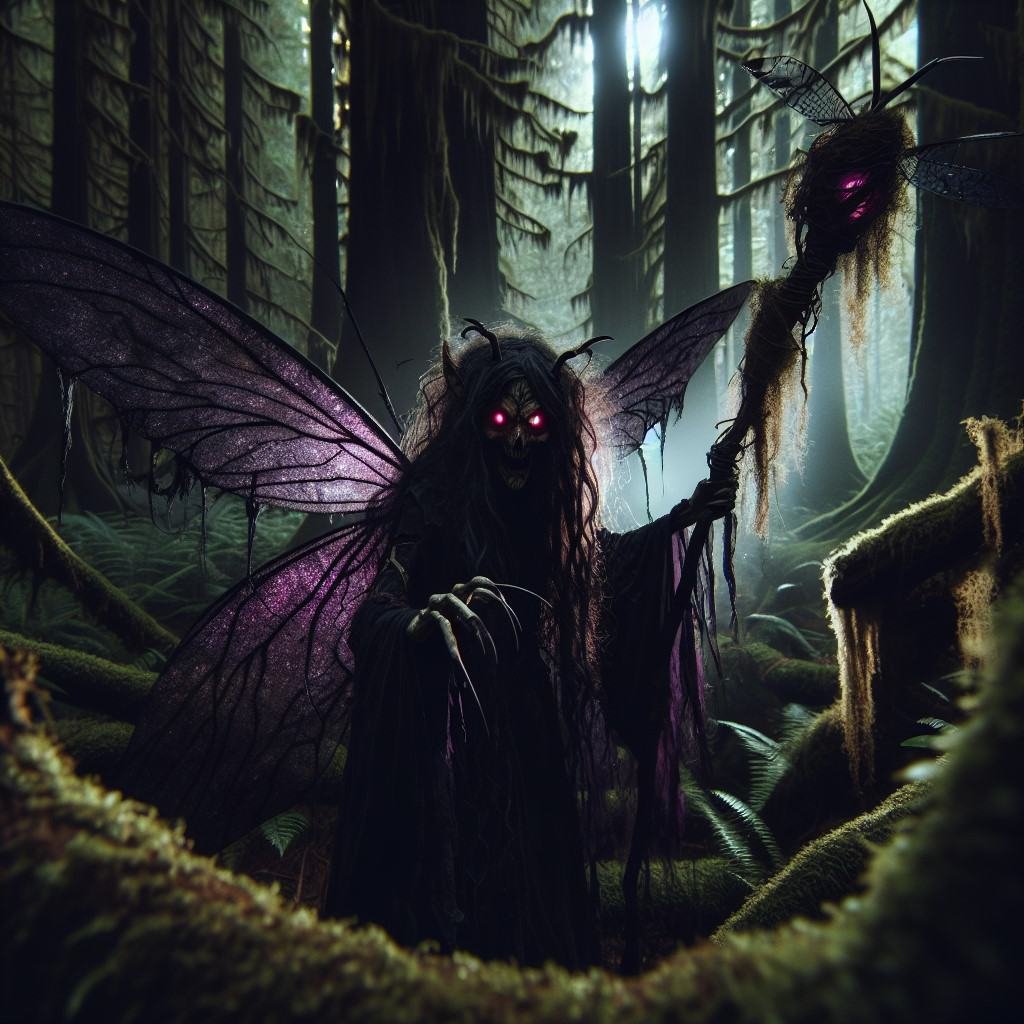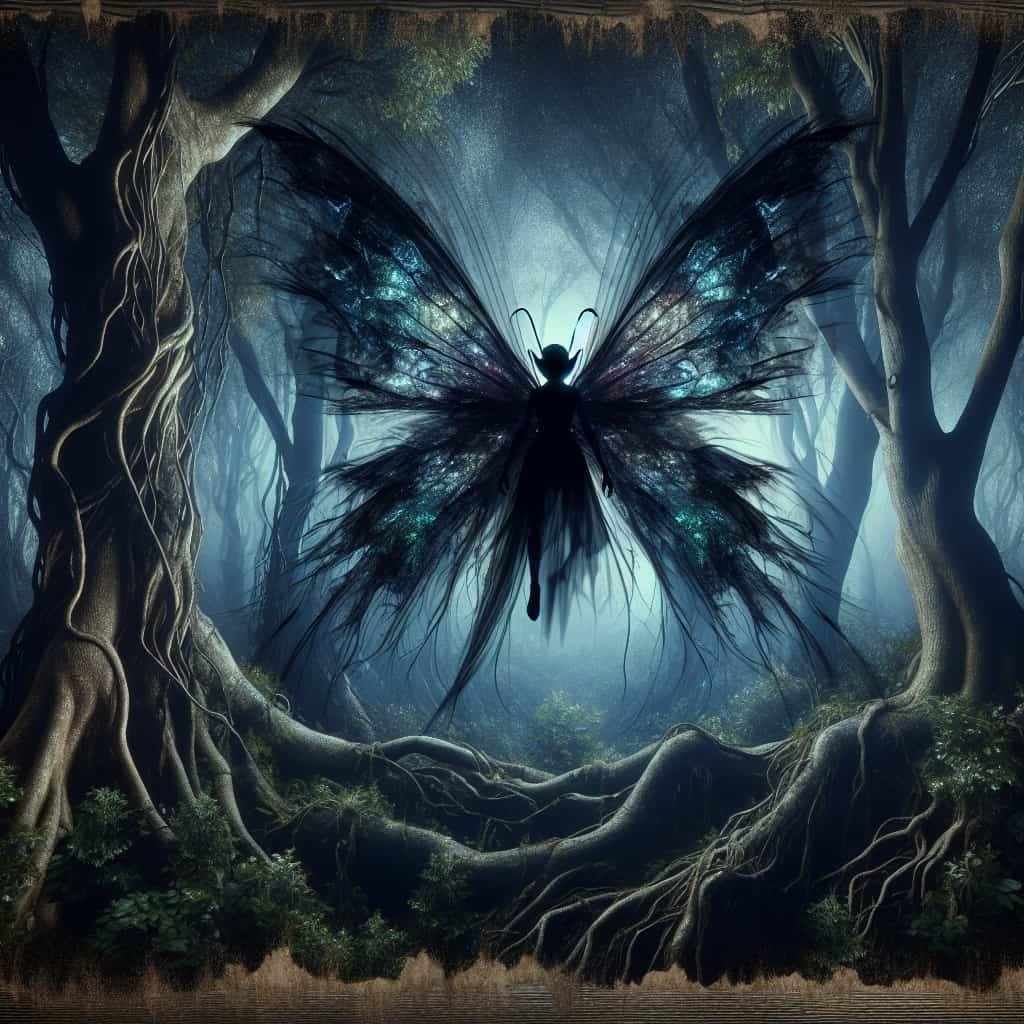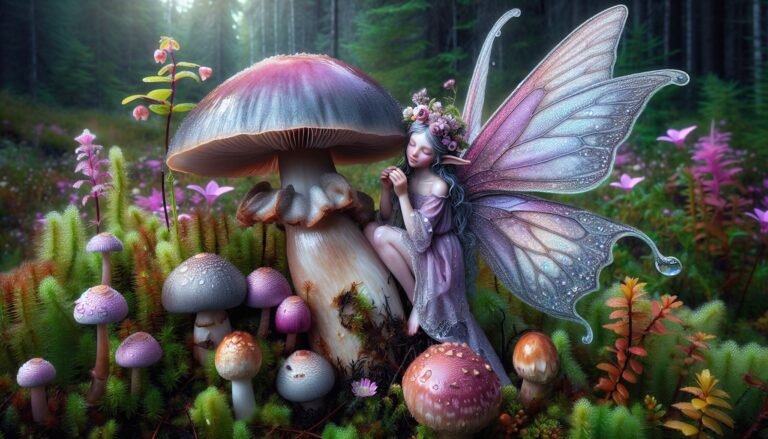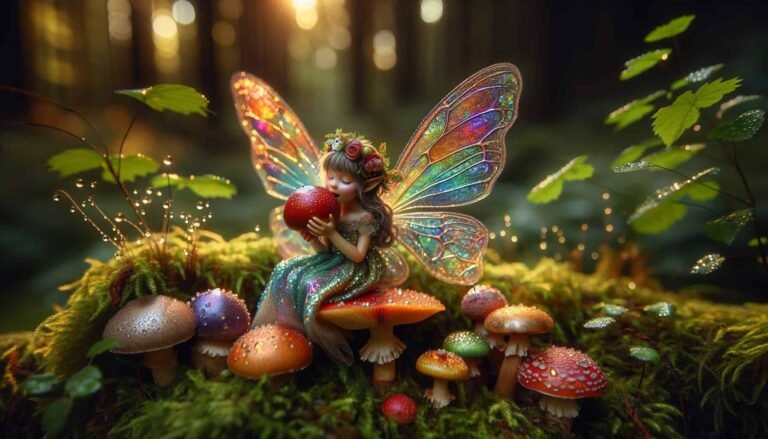Are fairies evil? From folklore and mythology to popular culture, fairies have been portrayed in various ways. Some see them as mischievous and playful, while others perceive them as dark and malevolent beings.
In this article, we will explore the age-old debate and the different perspectives on the nature of fairies. Are they truly wicked creatures or simply misunderstood? Let’s uncover the truth behind the legends and discover whether fairies are truly evil or not.
Throughout history, tales of fairies have captivated the imaginations of people from all walks of life. These enchanting creatures have been depicted in literature, art, and folklore, often with conflicting portrayals.
While some stories depict fairies as benevolent beings, granting wishes and bestowing blessings, others paint a more sinister picture. They are said to be vengeful and possess the power to bring misfortune and chaos. But are these depictions accurate, or are fairies simply victims of misconceptions and misinterpretations?
Fairy Folklore: A Complex Tapestry
Fairy folklore is a rich and intricate tapestry of beliefs, legends, and stories that have been passed down through generations. Throughout history, different cultures have developed their unique interpretations and perceptions of fairies. This diversity contributes to the complexity and enigma surrounding these mystical beings.
In many traditions, fairies are associated with the natural world, often depicted as guardians or protectors of forests, meadows, and bodies of water. They are believed to have the ability to influence the growth of plants, the fertility of animals, and the overall balance of nature.
This benevolent image of fairies can be seen in various folktales and artwork, where they are depicted as enchanting, ethereal creatures whose presence brings beauty and harmony to the world.
However, the perception of fairies as purely benevolent beings is not universal. In some cultures, fairies are seen as mischievous and unpredictable entities. They are known to play pranks on humans, often causing mild inconvenience or humorous mishaps. These portrayals highlight the playful and often capricious nature of fairies, emphasizing their ability to disrupt the lives of mortals and challenge the established order.

Contrastingly, there are also darker depictions of fairies in folklore. Some legends suggest that fairies have a malevolent side and can be vengeful towards humans who disrespect or harm their domain. They are believed to have the power to curse or enchant individuals, leading to illness, madness, or even death. These portrayals reinforce the idea that fairies should not be underestimated or trifled with, as their actions can have dire consequences.
The complexity of fairy folklore is further compounded by the fact that beliefs and perceptions, as well as the portrayal of fairies, can vary not only from culture to culture but also from region to region within the same culture. What may be considered a benign fairy in one part of the world may be seen as a malevolent creature in another.
As the article delves deeper into the topic, it becomes evident that the question of whether fairies are evil or not is not a simple one to answer. The conflicting portrayals and interpretations found in fairy folklore make it clear that fairies are entities of immense complexity and multifaceted nature.
Origins of the Evil Fairy Stereotype
The origins of the evil fairy stereotype can be traced back to various folklore and cultural beliefs. While fairies are often associated with benevolence and the protection of nature, there exist darker depictions that have contributed to the perception of fairies as malevolent beings. Here are a few key factors that have shaped the evil fairy stereotype:
1. Christian Influence: In Christian mythology, fairies were often seen as fallen angels or demons. The spread of Christianity in Europe resulted in the demonization of certain pagan beliefs and mythical creatures, including fairies. This perception of fairies as evil entities was reinforced by religious authorities and further perpetuated through literature and folklore.
2. Moral Ambiguity: Fairies, like any other supernatural beings, possess both positive and negative qualities. In folklore, fairies were believed to have their own set of morals and ethics, which may have differed from those of humans. This moral ambiguity led to stories where fairies would sometimes engage in mischievous behavior or enact revenge on humans, thus perpetuating the portrayal of fairies as villainous.
3. Human Interactions: Another factor that contributed to the evil fairy stereotype is the interaction between fairies and humans. Fairies were often blamed for unexplained misfortunes or tragedies, leading to a belief that they were responsible for causing harm. This perception was reinforced through stories and accounts of people who claimed to have experienced negative encounters with fairies.
4. Cultural Interpretations: The evil fairy stereotype can also vary across different cultures. In some cultures, fairies are believed to be mischievous tricksters, while in others they are seen as malevolent and capable of inflicting harm. These cultural interpretations further contribute to the diverse portrayals of fairies as either good or evil.

It is important to note that the evil fairy stereotype is just one aspect of the complex and multifaceted nature of fairies. Fairies, like humans, are capable of both positive and negative actions, and their portrayal in folklore and popular culture reflects the diverse beliefs and interpretations surrounding these mythical beings. This ongoing debate about the true nature of fairies adds to their enduring appeal and intrigue in the realm of folklore.
Fairies Through History: From Beneficial to Malevolent
Fairies have had a long and complex history, with perceptions and interpretations varying throughout different periods and cultures. In this section, we will explore how fairies have been seen as both beneficial and malevolent beings throughout history.
- Ancient Beliefs and Nature Spirits
In ancient times, fairies were often associated with the natural world. They were seen as powerful guardians or protectors of nature, and people would perform rituals and offerings to gain their favor. Fairies were believed to bring fertility to crops, ensure good harvests, and maintain the balance of the natural order.
- Mischievous Tricksters
However, not all depictions of fairies throughout history have portrayed them as benevolent beings. In many folklore traditions, fairies were seen as mischievous and unpredictable. They were known to play pranks on humans, leading to confusion and sometimes even mischief. Humans would often need to be cautious and respectful when encountering fairies to avoid falling victim to their mischievous antics.
- Darker Depictions and Vengeful Spirits
In some folk beliefs, fairies were even depicted as malevolent beings with the power to cause harm. These fairies were often associated with curses, enchantments, and acts of revenge. They were not to be crossed or disrespected, as it was believed that they could bring sickness, misfortune, or even death to those who angered them.
- Shifting Perceptions and Interpretations
The perception of fairies as either beneficial or malevolent beings varied not only across different cultures but also throughout different periods. Changing social, cultural, and religious influences played a significant role in shaping these perceptions. For example, the rise of Christianity led to the demonization of fairies in some European cultures, associating them with evil and connecting them to fallen angels.
Throughout history, fairies have been portrayed as both saviors and tricksters, protectors and punishers. The dual nature of fairies highlights the complexity of human beliefs and the multifaceted nature of these mythical beings. The interpretation of fairies as either good or evil is highly subjective and dependent on cultural context and individual beliefs. The next section will delve further into the origins of the evil fairy stereotype and its impact on popular culture.
Misunderstood or Truly Sinister: Analyzing Different Perspectives
Throughout history, fairies have been both revered and feared, leading to a multitude of interpretations and perspectives on their true nature. Some argue that fairies are simply misunderstood beings, while others view them as truly sinister entities. This section will delve into the various viewpoints surrounding fairies and shed light on the complexities of their character.

1. Cultural Influences: The perception of fairies can differ significantly across cultures. In some folklore, fairies are seen as benevolent creatures, bestowing blessings upon those who show them respect. Celtic mythology, for instance, often portrays fairies as guardians of nature and protectors of the land. On the other hand, certain cultures depict fairies as malevolent spirits that bring misfortune and chaos.
2. Moral Ambiguity: Fairies’ actions in folklore are often ambiguous, with their motivations and behaviors difficult to categorize as purely good or evil. They can bring both joy and sorrow, acting as mischievous tricksters one moment and rescuing lost souls the next. This moral ambiguity contributes to the ongoing debate about their true nature.
3. Human Interactions: Folklore frequently emphasizes the interaction between fairies and humans, highlighting their ability to influence mortal lives. Some believe that fairies can be manipulated or appeased through offerings and respect, while others caution against provoking them, as they may respond with malicious intent.
4. Historic Context: The portrayal of fairies has evolved over time, influenced by social, cultural, and religious factors. Christian mythology, for example, cast fairies as fallen angels or demons, associating them with evil. This perception, combined with societal fears and anxieties, further emphasized the narrative of fairies being wicked entities.
5. Personal Interpretation: Ultimately, the perception of fairies as good or evil is subjective and can vary from person to person. Each individual brings their own beliefs, experiences, and cultural background to their understanding of these mythical beings. What may be seen as mischievous to one person could be perceived as malevolent by another.
Debunking the Myths: Shedding Light on Fairies’ True Nature
Fairies have long been shrouded in mystery and myths. Throughout history, they have been depicted as both benevolent protectors of nature and mischievous tricksters capable of wreaking havoc. However, it is important to delve deeper and explore the true nature of fairies beyond these prevailing stereotypes.
Cultural Influences on Fairy Perception
One must take into account that perceptions of fairies can vary greatly from culture to culture. In some traditions, fairies are seen as spirits closely tied to the natural world, where they serve as guardians of forests, rivers, and meadows. They are portrayed as gentle creatures who bring harmony and protect the environment.
On the other hand, certain cultures depict fairies as playful and prone to pranks. These mischievous fairies are often associated with laughter and good-natured tricks, rather than malicious intentions.

Moral Ambiguity in Fairy Actions
Another aspect to consider is the moral ambiguity surrounding the actions of fairies. While they may play jokes on humans, it is often done without causing any harm. Fairies are known for their love of fun and whimsy, choosing to bring joy and laughter to those they interact with.
However, there are instances where fairies are portrayed as vengeful beings, capable of using their powers to curse or enchant individuals. These darker depictions highlight the complexity of fairies’ nature and the potential consequences of crossing their path.
Interaction between Fairies and Humans
The interaction between fairies and humans is also a key factor in understanding their true nature. In many folktales, fairies are shown to have a piqued interest in human affairs, sometimes even forming relationships and friendships with humans. These interactions reveal a more compassionate side to fairies, suggesting that their intentions might not always be sinister.
Historical Context of Fairy Portrayal
The portrayal of fairies has evolved over time, influenced by societal, cultural, and religious factors. In Christian mythology, fairies were often viewed in a negative light due to their association with pagan beliefs and practices. This negative perception continued to influence the portrayal of fairies as malevolent beings in later folklore and literature.
Conclusion: Fairies – Mischievous But Not Evil
Fairies are mythical beings that have captivated the human imagination for centuries. Throughout history, they have been depicted in folklore and popular culture as both benevolent guardians of nature and mischievous tricksters. While there are darker depictions of fairies as vengeful spirits capable of cursing or enchanting individuals, it is important to recognize that these portrayals are just one aspect of their complex nature.
The article has explored the multifaceted nature of fairies, highlighting the fact that beliefs and perceptions of fairies can vary greatly across cultures and regions. The origins of the evil fairy stereotype have been discussed, including the influence of Christian mythology, moral ambiguity, human interactions, and cultural interpretations.
It is clear that fairies are not inherently evil, but rather possess a dual nature that allows for both positive and mischievous behavior. Their portrayal in folklore and popular culture reflects the diverse beliefs and interpretations surrounding these mythical beings.
Fairies should not be solely defined by the evil stereotype. Instead, they should be appreciated for their cultural significance, moral complexity, and the rich tapestry of stories and legends that surround them. Fairies may be mischievous, but they are far from being purely evil.
Read next:


